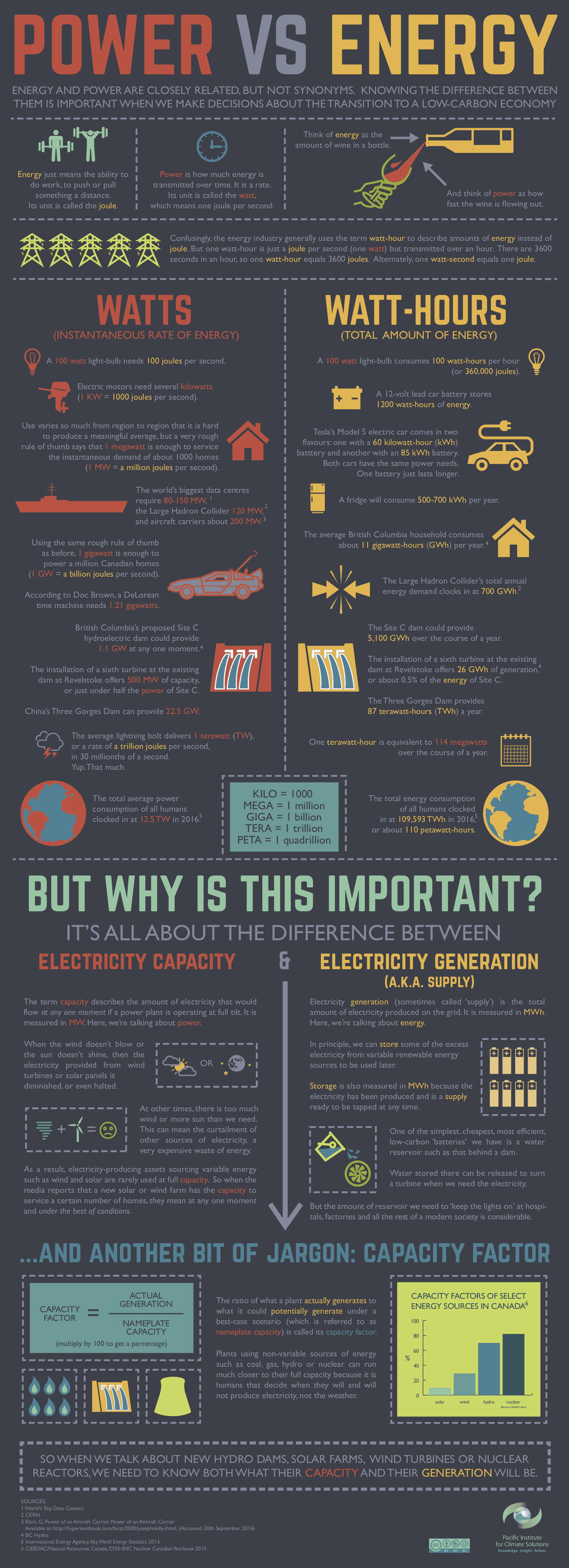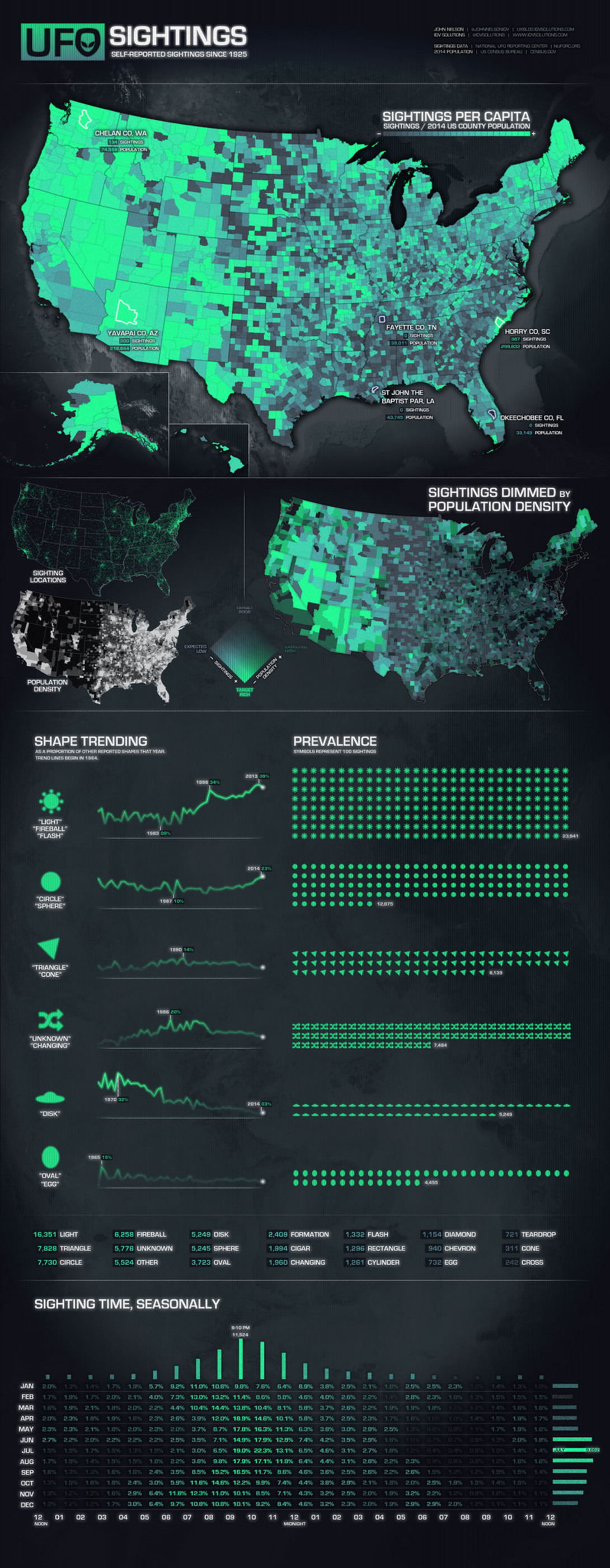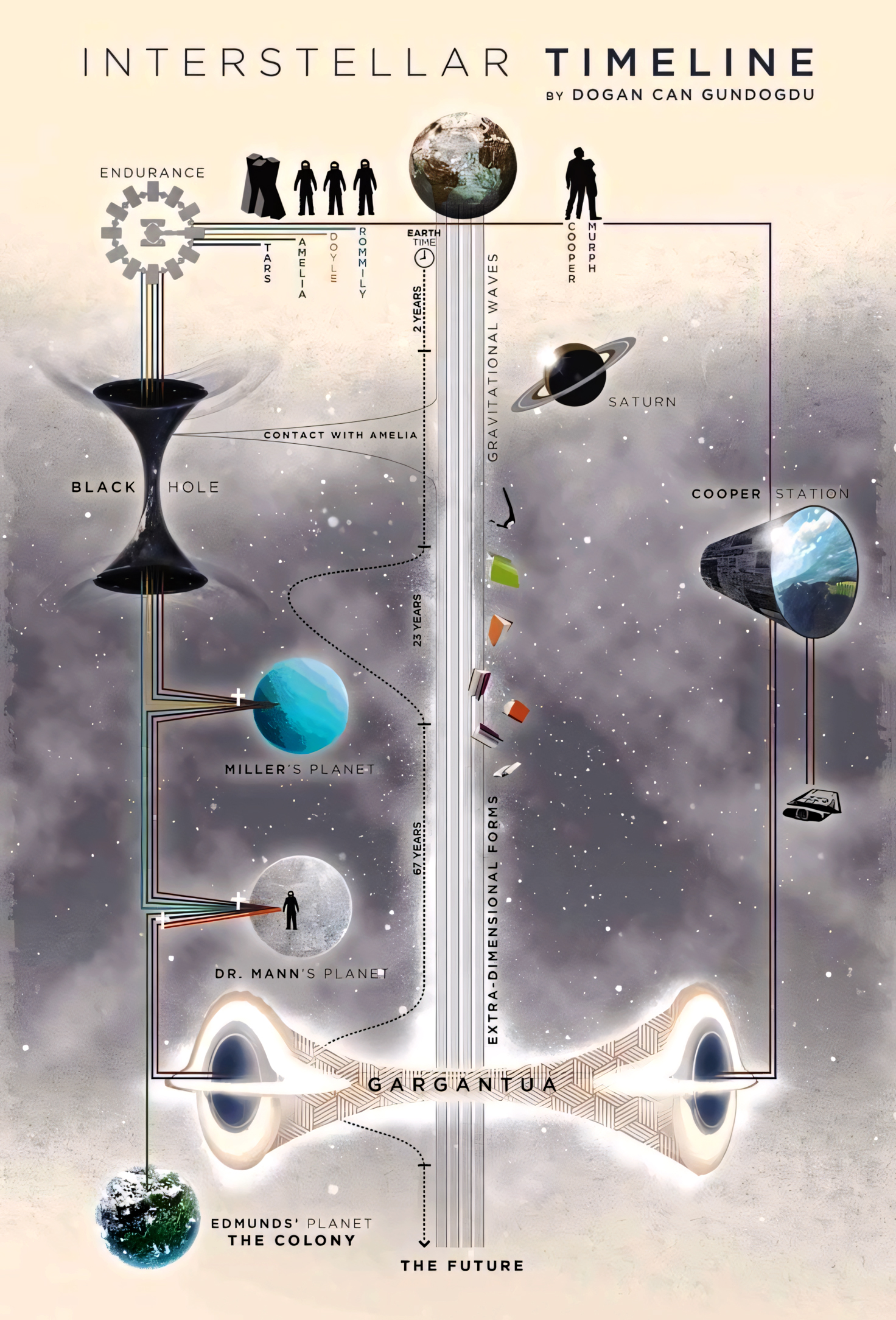
Power vs. Energy: Understanding the Key Differences for a Sustainable Future
In discussions around energy, especially when planning for a low-carbon economy, the terms power and energy often appear interchangeably. However, they represent fundamentally different concepts. This infographic helps distinguish between the two, offering insights into their respective roles and why understanding both is critical for making informed decisions about electricity generation, consumption, and sustainability.
The Basics: What is Power and Energy?
- Energy refers to the capacity to do work—it’s the amount of work that can be done, and it’s measured in joules (J). You can think of energy as the total quantity of fuel in your gas tank.
- Power, on the other hand, is the rate at which energy is used or transmitted. It’s measured in watts (W), where one watt equals one joule per second. Continuing the gas tank analogy, power is how fast that fuel is consumed—whether you’re idling or speeding down the highway.
Practical Differences
The infographic uses real-world examples to highlight these differences:
- A 100-watt light bulb uses 100 joules per second of energy (this is its power usage). Over an hour, this equals 100 watt-hours of total energy consumption.
- In larger contexts, such as electricity grids, power and energy are measured on much bigger scales, such as megawatts (MW) and gigawatt-hours (GWh). For instance, 1 megawatt equals 1 million joules per second, while 1 gigawatt-hour represents 1 billion joules of energy consumed over time.
Watts and Watt-Hours: Instantaneous vs. Total Energy Use
The key takeaway from the infographic is the distinction between watts and watt-hours:
- Watts measure the instantaneous rate of energy use. For example, a home might draw 1 kW (kilowatt) at any given moment.
- Watt-hours, on the other hand, measure the total amount of energy used over a period of time. For example, if a fridge uses 500-700 kWh per year, this is its total energy consumption, even if its instantaneous power usage might be much lower.
Why the Difference Matters
Understanding the difference between power and energy is crucial when planning for electricity generation and distribution. The infographic highlights two key concepts:
- Electricity Capacity:
- Capacity refers to the amount of power that a facility (like a wind turbine or power plant) can produce at any given moment. It’s typically measured in MW.
- But the capacity alone doesn’t tell the whole story. Due to variability in natural resources (like sunlight for solar panels or wind for turbines), capacity can fluctuate.
- Electricity Generation (Supply):
- Generation, measured in megawatt-hours (MWh), is the total amount of electricity produced over time. It’s important to consider not just a facility’s peak capacity, but how much energy it actually generates annually.
Capacity Factor: A Critical Metric
The infographic introduces the concept of the capacity factor, which measures how much a plant actually generates compared to its theoretical maximum capacity. Plants running on non-variable sources, such as coal, nuclear, or hydroelectric power, tend to have a high capacity factor since they can produce near their maximum capacity most of the time. Wind and solar, on the other hand, have lower capacity factors because their output is dependent on weather conditions.
For example:
- A wind plant might have a capacity factor of 20-40%, meaning it generates power about 20-40% of the time at its full potential.
- In contrast, a nuclear plant can have a capacity factor as high as 90% or more, producing electricity almost constantly.
Why Does This Matter?
This distinction is critical for energy planning. When deciding how much electricity a grid can reliably provide, planners need to consider both:
- The capacity of various plants (how much power they can produce at any moment), and
- The actual energy generation (how much energy they’ll produce over time).
For instance, while a wind farm might have a large installed capacity, its contribution to total energy supply can be much smaller than expected if wind conditions aren’t ideal.
Planning for a Low-Carbon Economy
To transition to a more sustainable, low-carbon future, understanding the difference between power and energy is essential. Governments and energy providers need to know not only how much power they can generate at peak times but also how much energy will be generated over the course of a year, and from which sources. This informs the planning of new renewable energy projects, energy storage solutions, and grid reliability.
By recognizing these differences, we can make more informed decisions about how to balance renewable energy sources with more consistent ones like hydroelectric and nuclear power, ensuring a more reliable and sustainable energy future.







